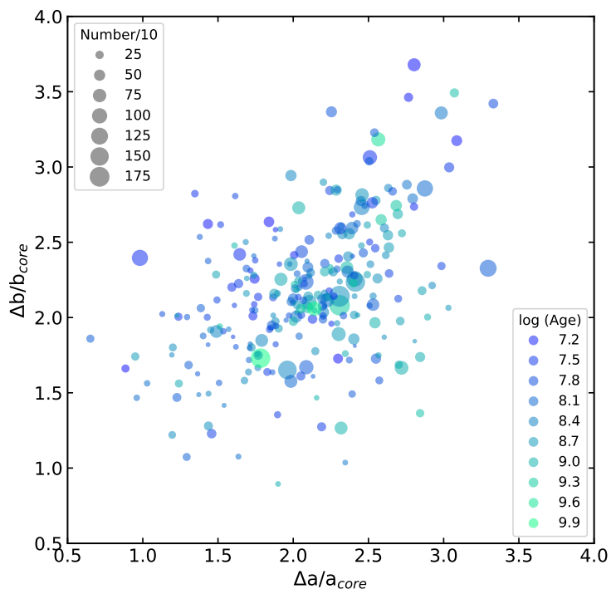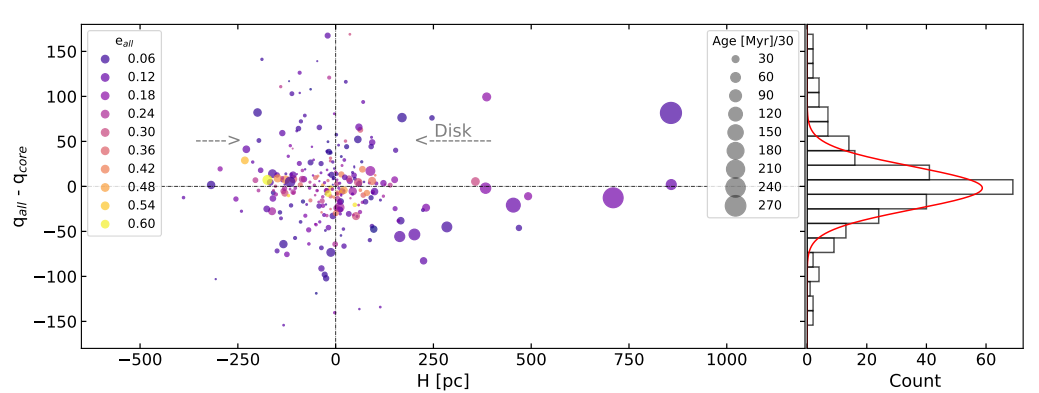

Deciphering Star Cluster Evolution by Shape Morphology
We thus analyze the morphological evolution of 265 open clusters and provide their shape parameters. The results show that the overall shape of the sample clusters becomes more elliptical as they grow older, while their core remains circular or slightly trending to circularize. There is a negative correlation of the ellipticities with the number of members of the sample clusters, suggesting that the overall shapes of the clusters are possibly influenced by the number of members, in addition to the external forces and the surrounding environment. For most young clusters, the radial stratification degree of the short-axis direction is greater than that of the long one, implying that the radial stratification degree in the two directions within the young clusters may be unevenly affected by an internal evolutionary process. The older clusters exhibit lower stratification in the tangential direction, which possibly means those clusters may continue to survive for a long time at a low level of stratification. Our analysis shows that the overall shape of the clusters may be more susceptible to the influence of Galactic tides toward the Galactic center than the shear forces embedded in Galactic differential rotation.
In our work, the degree of stratification of the clusters' morphology is quantified for the first time. This may provide an effective way for the study of the clusters' morphology distortion.



The distribution between the tangential stratification of the sample clusters and the height from the galactic plane as well as the histogram of the tangential stratification.
Contact: HU Qingshun
Xinjiang Astronomical Observatory, Chinese Academy of Sciences
Email: huqingshun@xao.ac.cn
Web: https://iopscience.iop.org/article/10.3847/1538-4357/abec3e
Attachment Download: